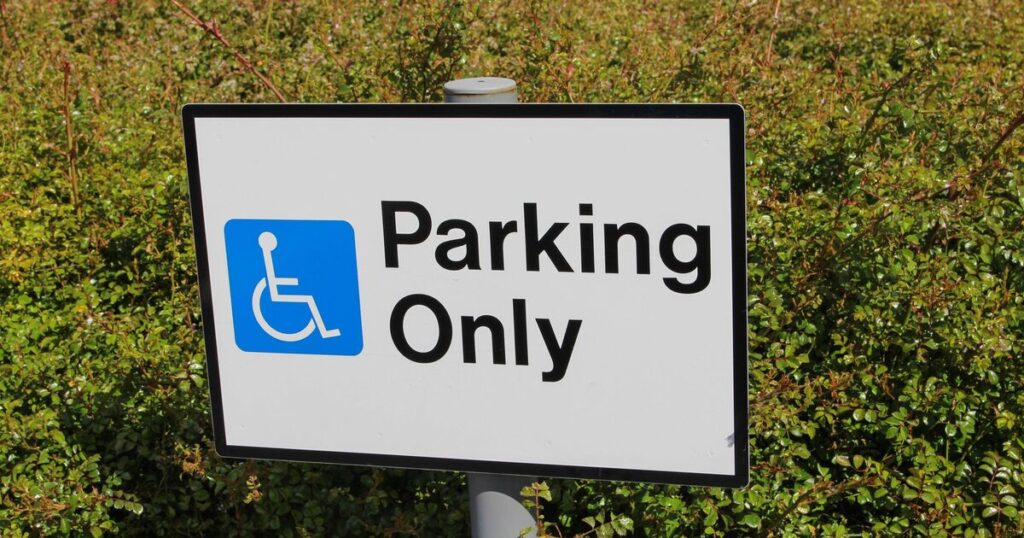
People with disabilities, physical or mental health conditions that affect their walking capabilities, or hidden illnesses such as dementia, autism, or Parkinson’s, might be eligible for a Blue Badge. This badge enables them to park nearer to the entrance of their destination in designated spots.
A Blue Badge holder, be it as a driver or a passenger, is entitled to free parking in disabled bays and may also be exempt from various other parking restrictions. But, it’s important to bear in mind that permit holders have over 10 locations where parking is always banned, risking a fine or penalty should people choose to park there anyway.
The Blue Badge Scheme grants vehicles the privilege of parking in some areas that are off-limits to other drivers. In England, its use is mainly for on-street parking, while car parks like those at shopping centres, hospitals, or supermarkets operate under slightly different rules.
In Scotland, Wales or Northern Ireland, badge holders should be aware that the rules can also differ slightly. The relevant guidance can be found by going to the local Government guidance linked above.
GOV.UK has emphasised that Blue Badge holders in England must not abuse the privilege by parking in certain spots. This could be labelled as misuse of the badge whcih is a criminal offence, reports Lancs Live. The authorities have clarified: « It is a criminal offence for you or anyone else to misuse the badge. Doing so could lead to a £1,000 fine and confiscation of the badge. »
What is a Blue Badge?
A Blue Badge acts as a parking permit for people with disabilities or health conditions that affect their mobility. This allows badge holders to park closer to their destination, whether they’re the driver or a passenger.
Blue Badge holders may be exempt from certain parking restrictions, such as time limits on parking meters or pay-and-display schemes. They might also be eligible for exemptions from road tax, although this is subject to specific criteria.
It’s essential to check the specific rules and regulations of the area where the badge is being used, as some places may have additional restrictions or require the use of a parking clock. Full guidance and details can be found online here.
Where are Blue Badge holders able to park?
The guidance sets out clear instructions for Blue Badge holders. When parking with the intention to use the badge, it must be displayed on the dashboard or facia panel « where it can be clearly read through the front windscreen. »
The hologram should be facing upwards, ensuring the side with your photograph is kept out of sight. Motorists are reminded that « details on the front of the badge remain legible » as a faded or illegible badge risks a parking fine.
The Blue Badge in England typically entitles you to parking under these conditions:
- At parking meters or pay-and-display machines, for any length of time needed.
- In marked disabled bays on streets indefinitely, barring any time restrictions displayed on signs.
- On single or double yellow lines for no more than 3 hours, providing there isn’t a ‘no loading’ indicator.
Where are Blue Badge drivers not allowed to park?
The Blue Badge does not provide a universal exemption from all parking rules. For example, it doesn’t allow parking on double or single red lines, except in certain circumstances.
There is a comprehensive list of 11 spots where parking is off-limits that can be found on the GOV.UK site, serving as a reminder that « the Blue Badge is not a licence to park anywhere ». Thse include:
- Places where a ban on loading or unloading is in force, as indicated above by kerb markings.
- Parking places reserved for specific users such as resident’s bays or loading bays.
- Pedestrian crossings (zebra, pelican, toucan and puffin crossings), including areas marked by zig-zag lines.
- Clearways (no stopping).
- A bus stop clearway during its hours of operation.
- An urban clearway within its hours of operation. You may pick up or drop off passengers. All parking is forbidden.
- School ‘keep clear’ markings during the hours shown on a yellow no-stopping plate.
- Bus, tram or cycle lanes or cycle tracks. Badge holders are not entitled to drive in bus lanes during their hours of operation.
- Where there are double white lines in the centre of the road, even if one of the lines is broken.
- Suspended meter bays or when use of the meter is not allowed.
- Where temporary parking restrictions are in force, as shown for example by no-waiting cones.
